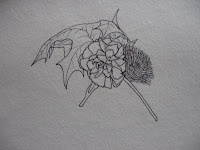

Clay Mosaics are a fun way to introduce students to mosics.
This project is goes along well with studies of Christmas traditions around the world.
I included a handout of Christmas traditions around the world.
Students were particularly interested in St Lucia Day.
Students watch a demo on how to kneed clay then roll clay out and cut with a cookie cutter.
To cut properly you must emphasize that the cutter be pushed down with force, as well as moved slightly from side to side.
Students then learn to Marbelize! The students loved mixing white clay with blue to make the World ocean. Students made blue & white marbelized balls then flattened them and adhered to cut clay design.
Continents were the next part of the lesson students used green clay to form the continents, which were placed on the blue marbelized ocean.
Nest students made tiny balls with yellow clay and highlighted the globe.
Students were give more colored clay to make and adhere mosaic pieces to thier design.
Finishing touches:
Students used the end of paint brushes to make small indentations. Students used glitter glue to fill the indentations to give the ornament a shimmery look.




























